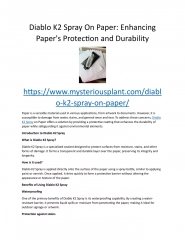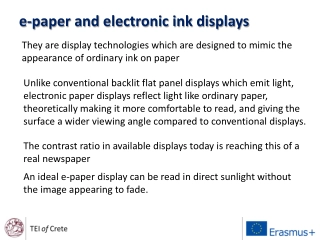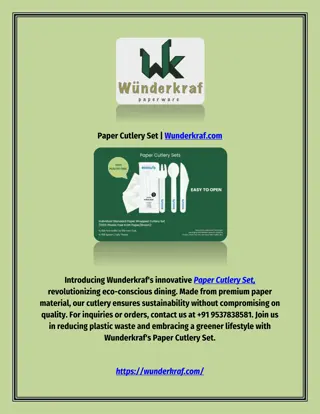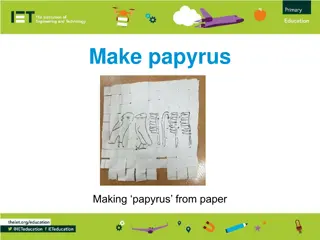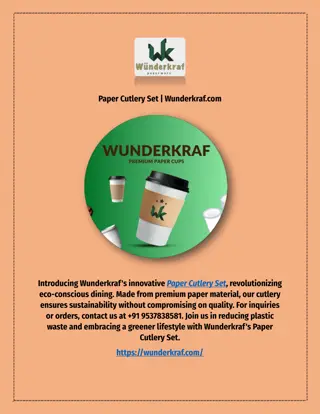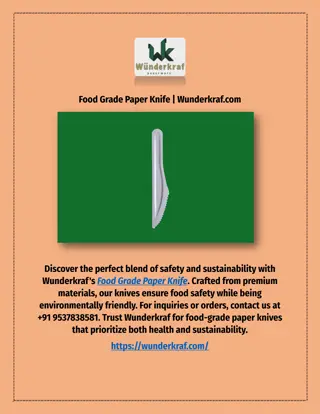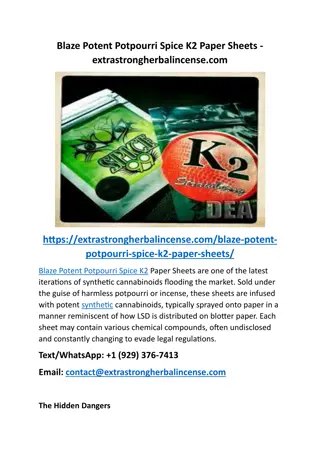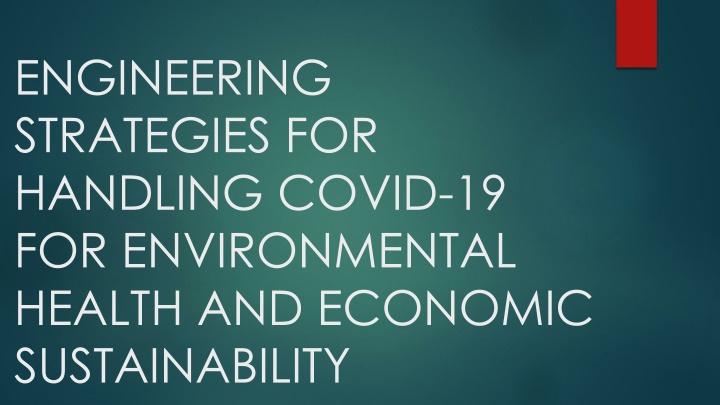
Engineering Strategies for COVID-19: Environmental Health & Sustainability
Explore innovative engineering strategies for combating COVID-19, focusing on environmental health, economic sustainability, and effective prevention methods. Learn how engineering solutions like mass production of medical equipment and enhanced protective gear can protect communities.
Uploaded on | 0 Views
Download Presentation

Please find below an Image/Link to download the presentation.
The content on the website is provided AS IS for your information and personal use only. It may not be sold, licensed, or shared on other websites without obtaining consent from the author. If you encounter any issues during the download, it is possible that the publisher has removed the file from their server.
You are allowed to download the files provided on this website for personal or commercial use, subject to the condition that they are used lawfully. All files are the property of their respective owners.
The content on the website is provided AS IS for your information and personal use only. It may not be sold, licensed, or shared on other websites without obtaining consent from the author.
E N D
Presentation Transcript
ENGINEERING STRATEGIES FOR HANDLING COVID-19 FOR ENVIRONMENTAL HEALTH AND ECONOMIC SUSTAINABILITY
PRESENTED BY: TANARAMI WUWUORITSELA ADRIEL MECHATRONICS ENGINEERING 17/ENG05/038
ABSTRACT Coronaviruses are a large family virus that are known to cause illness ranging from the common cold to more severe illnesses such as Middle east or Severe acute respiratory syndrome. A novel coronavirus (COVID-19) was identified in 2019 in Wuhan, Hubei province china has spread to many countries worldwide. This is a new strand of coronavirus that has not been previously identified in humans. This term paper is on the engineering strategies for handling COVID-19 for environmental health and economic sustainability.
INTRODUCTION Coronavirus disease spreads primarily through contact with an infected person when they cough or sneeze. It also spreads when a person touches a surface or object that has the virus on it, then touches their eyes, nose, or mouth.
WAYS OF PREVENTING SPREAD OF CORONA VIRUS Wash your hands regularly for 20 seconds, with soap and water or alcohol-based hand rub Cover your nose and mouth with a disposable tissue or flexed elbow when you cough or sneeze Avoid close contact (1 meter or 3 feet) with people who are unwell Stay home and self-isolate from others in the household if you feel unwell
EQUIPMENT USED; 1. Ventilator
WAYS ENGINEERING CAN HELP Mass production of medical equipment like ventilators. Design better protective infrastructure to help shop workers facing customers at tills. What about designing new personal trolley handles from home? Create new kinds of easy to make and deploy protective face gear for the elderly and vulnerable. Creation of isolation centers. Focus on the mass production and distribution of on-street hand sanitizer, or gloves treated with new, safe anti-viral coating.
OTHER WAYS ENGINEERING CAN HELP Developing websites for small businesses. Creating an app that could analyze the symptoms that you re having to know if you have been infected. Helping universities to create online classes for lectures.
CHALLENGES Transportation of medical supplies. Poor quality of some equipment due to mass production. Lack of willing personnel. There s still a lot we don t know about the viruses.
PROSPECTS Researchers are searching for effective and suitable vaccine candidates and therapeutics for controlling the deadly COVID-19. There are no effective vaccines or specific antiviral drugs for COVID-19. Hence, we have to rely exclusively on enforcing strict preventive and control measures that minimize the risk of possible disease transmission. Results obtained from the recently conducted in vitro study against COVID-19 are promising since the drugs remdesivir and chloroquine were found to be highly effective in controlling the infection. Direct clinical trials can be conducted among the patients infected with COVID-19 since these drugs are being used for treating other diseases and have well-established safety profiles, making the further evaluation of these drugs much easier. S protein is considered a key viral antigen for developing CoV vaccines, as shown in several preclinical studies. Although research is in progress to improve prevention, treatment, and control of COVID-19, the documented clinical data on different therapeutic approaches for CoVs are scarce. Further research should be directed toward the study of SARS-CoV-2 in suitable animal models for analyzing replication, transmission, and pathogenesis.
CONCLUSION There are no effective vaccines or specific antiviral drugs for COVID-19. Hence, we have to rely exclusively on enforcing strict preventive and control measures that minimize the risk of possible disease transmission. We all need to think again about how technologies and science-based critical thinking can spread compassion and wisdom more quickly than hysteria and misinformation. So kindly stay safe during this pandemic.
THANKS FOR YOUR ATTENTION

